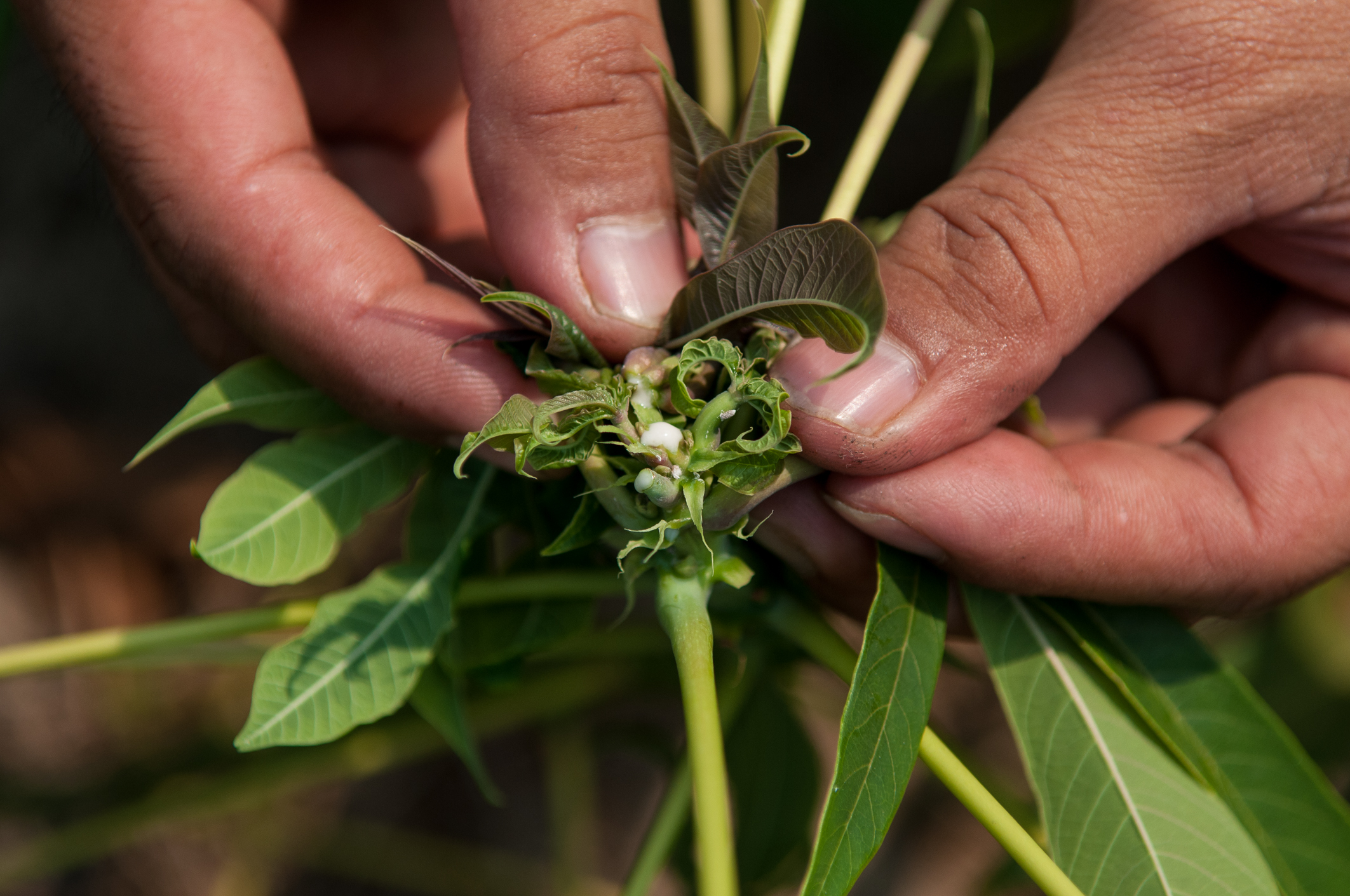Pests annually causes a loss of more than 20% of the five major crops that provide half of the world’s population of caloric intake, according to a study by researchers at the International Center for Tropical Agriculture (CIAT).
Climate change and global trade are key factors in the emergence and spread of crop diseases, which are often ineffective, especially in low-income countries, revealed a study published recently in the journal Science.
In this study, the researchers are providing a global monitoring system to improve global food security and increase agricultural production by up to 70% by 2050, through reducing the proportion of lost crops due to pests, noting that only 2-6% of the goods are well screened.
The researchers expect the proposed monitoring system to pay off in 2020, in conjunction with the United Nations’ year as the International Year of Plant Health, stressing that “this system gives priority to the five main crops: maize, potatoes, rice, wheat, cassava, and beans, in addition to food and commercial crops.”
“In the policy forum, we conclude that there is a need to strengthen plant surveillance systems and we proposed and summarised a strategy for the world to be better prepared for the introduction and spread of crop pathogens that threaten food security and trade globally,” said Mónica Carvajal, a CIAT researcher and the lead author of the study.
Regarding the methods that the researchers used to reach to the results of the study, Carvajal added, “I applied to the Rockefeller Foundation (RF) to convene a meeting in the RF Bellagio Center in Italy in 2018 in order to develop a strategic plan for a global surveillance system (GSS) to protect crops against diseases.”
According to the researcher, the RF supported the initiative and 19 experts in genetics, virology, pathology, entomology, biotechnology, epidemiology, climate change, metadata analysis, geospatial analytics, and global development policy gathered to analyse, synthesise, and share knowledge about emerging infectious diseases of plants that threaten global food security.
The week-long meeting and one year of continuum discussions between participants allowed them to propose a strategic plan taking lessons learned from well-established networks and organisations, such as the United States National Plant Diagnostic Network, and the European and Mediterranean Plant Protection Organization.
Carvajal argued that the results of her study are very important, explaining that the plan proposed in the policy is highly important because it presents the multidisciplinary strategy of important networks that closely work together to enhance the regional and local capacity in diagnostics, data sharing, communication, and risk assessment components.
According to the lead author of the paper, these are the components that need to be strengthened in the most low-income countries and in the world, which is subjected to a changing climate and increasing trade. The diagnostic network, for example, is one of the already identified components by the Intergovernmental Panel on Climate Change (IPPC) development agenda for 2020-2030 and the GSS is just in time for the discussion in the context of next year, as being proclaimed as the International Year of Plant Health.
“I am a biologist with a PhD in virology from the University of Freiburg, Germany. I’ve been working with human, animal, and plant viruses for more than 10 years. Specifically, to prepare the GSS plan, the idea started in 2016 while being part of the CIAT team that confirmed the cassava mosaic disease (CMD) outbreak in Cambodia, and by working to improve diagnostic methods to detect viral diseases in rice, beans, papaya, cassava, and other crops,” Carvajal shared.
In 2017, she started working for the proposal to the RF. The meeting with the 19 experts was in February 2018 and since then she and the team had regular meetings sharpening the discussion presented in the document, she added.
Moreover, Carvajal believed that one significant aspect to satisfy the global demand for food is to reduce the number of crops lost by crop diseases. Early detection, efficient communication, and data sharing together with risk assessment predictions will facilitate a faster, more informed, and efficient response.
Carvajal also stressed the need to bring more institutions and organisations to the discussion, such as the IPPC, the Food and Agriculture Organization (FAO), and the G20 agriculture ministers’ meetings among others, to join efforts toward enhancing cooperation for a multiyear action plan.




